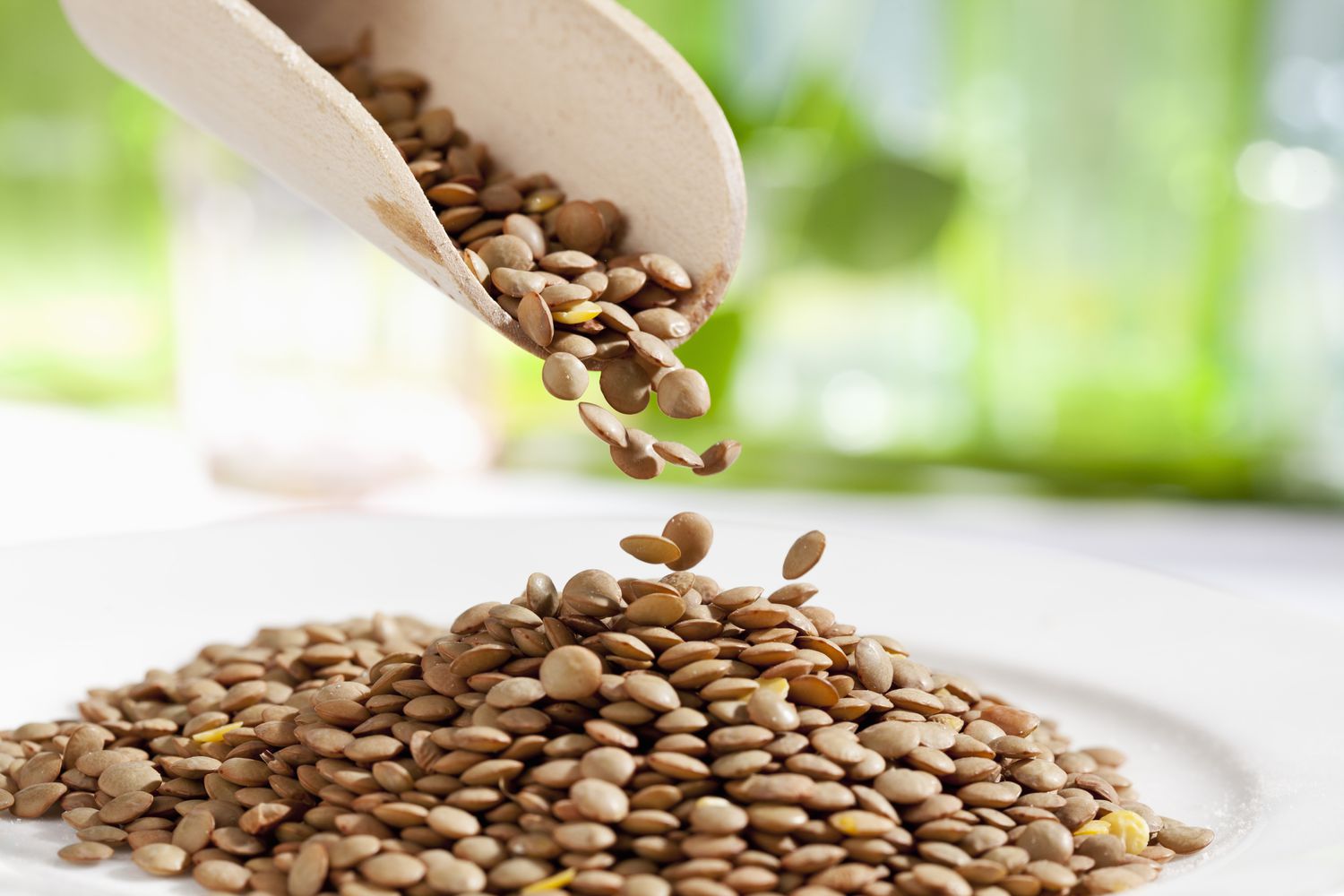
The global pistachio market is entering a tighter phase in the 2025/26 season. While the United States delivered a record harvest, sharp downward revisions in Iran and Turkey have pushed total global production lower than last year. According to the

Introduction
A detailed 2025 lentil market analysis focusing on Russia’s new 5% export duty, rising lentil prices in India, global production updates, and future price forecasts. Includes key insights on India’s import surge, Canada and Australia’s export potential, and other significant market events.
1. Latest Market Updates and News
A) Russia’s 5% Export Duty on Lentils, Chickpeas, and Peas
Effective January 2025, the Russian government imposed a permanent 5% export duty on lentils, chickpeas, and peas destined for countries outside the Eurasian Economic Union (EAEU). Previously, export duties fluctuated between 4% and 7%. Official statements indicate that this measure aims to balance domestic consumption with export volumes.
Data show that in the 2023/2024 marketing year, Russia exported approximately 3.2 million metric tons (mt) of pulses (including lentils), supported by a total production of about 4.7 million mt. Analysts anticipate that the new fixed duty could reduce Russia’s competitiveness in global lentil markets, particularly compared to top exporters like Canada and Australia. Logistical constraints and stricter quarantine regulations (Rosselkhoznadzor) have already posed challenges to Russian pulse exports.
B) Steady and Increasing Lentil Prices in India
Over recent weeks, lentil prices in India have continued their upward trajectory. Key drivers include:
Market reports indicate that these factors have pushed up Indian lentil prices by about USD 30–36 per ton. Canadian lentils arriving at Mundra Port in January 2025 are priced around USD 0.708 per kg, with landed costs totaling about USD 0.756 per kg. Consequently, retail and wholesale prices in India hover between USD 0.738 and USD 0.80 per kg, with possibilities of surpassing USD 0.816 as supply pressures persist.
C) India’s Peak Pulse Imports
In September 2024, India imported 453,000 mt of pulses, the highest September level since 2017. Total imports for 2024 reached 4.66 million mt—one of the highest yearly totals on record. The leading suppliers during this period were:
Although Russia has lentil and pea supplies available, its shipments to India have remained lower compared to other suppliers.
D) Other Notable Pulse Market Developments
2. Global Lentil Production Overview
India
India’s domestic lentil production in 2023/2024 was around 1.6 million mt, compared to an annual consumption of approximately 2.8 million mt. The rabi (winter) lentil crop for 2024/2025 is nearly fully planted in Madhya Pradesh, Rajasthan, and Uttar Pradesh, with harvesting expected in about two months. Warm weather during the late winter poses a risk that could affect overall yield and quality.
Russia
Lentils represent a smaller share of Russia’s total pulse production. Nonetheless, the newly enacted 5% permanent export duty may push exporters to offer more competitive prices to retain market share, especially in light of stiff competition from Canada and Australia.
Canada
Canada remains the world’s largest lentil exporter, primarily supplying red and green lentils. Rising import costs in India for Canadian lentils have contributed to higher wholesale and retail prices in Indian markets. If favorable weather and planting conditions prevail, Canada’s lentil production could see further gains in the coming year.
Australia
Australia is the second-largest exporter of lentils. With robust global demand, Australia may expand lentil production if weather patterns remain favorable. However, factors like drought or excessive rainfall can significantly influence the final crop outcome.
3. Major Exporters and Importers of Lentils
4. Product Quality, Harvest Timing, and Price Trends
Quality
Harvest Timing
Current and Future Price Trends
5. Key Market Signals and Analysis
A) Higher Import Costs in India
Reports from Mundra Port show Canadian lentils priced at USD 0.708 per kg, with additional fees pushing costs to USD 0.756 per kg. These higher costs support domestic prices in the range of USD 0.738 to USD 0.80 per kg.
B) Supply-Demand Pressure in India
Because India’s 1.6 million mt production falls short of its 2.8 million mt consumption, the country relies heavily on imports. Global supply challenges and rising transportation costs have magnified upward pressure on lentil prices.
C) Russia’s Export Duty Impact
The 5% export duty is likely to reshuffle some trade flows, potentially favoring Canada and Australia. Although Russia is not the largest supplier to India, this duty may still influence global price dynamics and give competitors an opening to expand market share.
D) India’s Policy on Minimum Support Prices (MSP)
India may increase MSPs or introduce other incentives for pulse growers. In the medium term, such measures could encourage farmers to shift to lentils, reducing dependence on imports over the next few years.
6. Projections and Market Trends for 2025
7. Additional Insights
Final Takeaway
The 2025 lentil market is shaping up under two major factors:
If India’s rabi lentil crop is robust, a price correction could occur in the latter half of 2025. If not, India’s high import demand—combined with steady consumption growth—will likely sustain elevated prices. Overall, the market is expected to remain active and potentially volatile until clearer signals emerge on India’s domestic harvest, Russia’s export policies, and evolving global logistics.
Frequently Asked Question
Why Are Lentil Prices Rising in 2025?
Lentil prices are on the rise mainly due to limited domestic production in India, higher import costs from major exporters like Canada and Australia, and a 5% export duty imposed by Russia. These factors combine to keep supplies tight and prices higher than usual.
Is India Still the World’s Largest Lentil Importer?
Yes. Despite ongoing efforts to boost local production, India remains the top importer of lentils, relying on external supplies from countries such as Canada and Australia to meet its annual consumption needs.
How Does Russia’s 5% Export Duty Affect Global Trade?
Russia’s new permanent export duty aims to balance domestic consumption with export volumes. For importers, this may mean a shift in trade flows or prices, as buyers look to other major exporters if Russian prices become less competitive.
Will India’s Upcoming Harvest Lower Lentil Prices?
If India’s rabi (winter) harvest yields a healthy crop, there could be a dip in import demand and a possible easing of prices in the second half of 2025. However, unpredictable weather and market conditions make it hard to say for sure.
Which Countries Lead Global Lentil Exports?
Canada is currently the largest lentil exporter, followed by Australia and Russia. Turkey and the United States also play significant roles in supplying lentils to the global market.
Are Higher Prices Expected to Continue Throughout 2025?
It depends on multiple factors such as India’s harvest success, Russia’s export strategies, and global demand. Many experts predict that prices will stay elevated through the first quarter, with more clarity emerging once India’s new crop is harvested.
How Do Weather Conditions Influence Lentil Quality and Supply?
In major producing regions—like India, Canada, and Australia—drought or excessive rainfall can significantly impact crop yields. Warmer-than-average temperatures, especially during the final growth stages, can lower the quality and quantity of lentils.
Why Is There Such a Focus on Pulses and Plant-Based Proteins?
Global dietary shifts toward healthier and more sustainable protein sources have driven up demand for lentils and other pulses. Many consumers see them as a nutritious, plant-based alternative to meat.
Can Russia’s Export Duty Lead to Better Opportunities for Other Suppliers?
Yes. If Russia’s export duty makes its lentils less competitive, importers may turn to Canada, Australia, or other suppliers. This scenario could present new market openings for countries looking to expand their lentil exports.
How Can Buyers and Traders Prepare for Market Fluctuations?
Monitoring global production updates, weather forecasts, and policy changes helps traders and buyers anticipate shifts in supply and pricing. Keeping an eye on India’s import requirements is especially crucial since it’s a key driver of global lentil demand.

